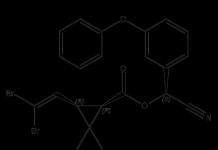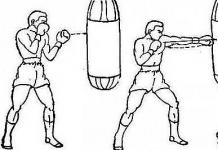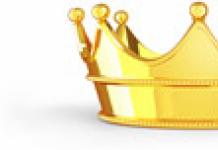The article is based on photographs and a translation of the book “The Japanese Tattoo” by Sandi Fellman, with additions.
Irezumi is not just a bright picture tattooed on the skin. This is a kind of human shield, his guardian. A tattoo can also serve as a warning - “Beware of whoever wears it!” She is similar to the snake-haired Medusa Gorgon from Greek mythology, or the female snake Lamia from Keats' poem...
Curled into a ring, the scaly shine of the lily -
The sparkle of crimson, azure, gold:
The snake was striped like a zebra,
Like a leopard is spotted; the peacock himself
I would fade away next to her in a moment.
And, similar to silver moons,
The reflections played on the wonderful skin.
The skin covered with irezumi, having endured the fiery pain of the needle, becomes the cool skin of a reptile. Images of writhing dragons, lightning in numerous zigzags, fish scales, and ripples from a moving body, which photography cannot capture, increase the defensive and enclosing effect. Do Irezumi speakers protect themselves from their emotions? Are they people protesting against the morality, technology, consumerism and conformism inherent in modern Japan? All that can be said about irezumi is Secrecy and Distance. Secrecy is ensured by a strict business suit that completely hides the tattoo, and Distance is the state of mind of the person wearing it, distant from many of the norms and prohibitions of modern society.
Meaning of Japanese carp tattoo
Carp (鯉), called “Koi” in Japan, was brought to the Land of the Rising Sun during the Middle Ages by immigrants from China, a country where it was grown and selected for many centuries. The carp immediately fell in love with local residents, who continued to work on its appearance through careful selection. In Chinese and Japanese cuisine, carp is given the place of the king of freshwater fish. It's hard to believe that this bright and whimsical fish, resplendent with gold, red and orange scales, is descended from the common freshwater carp. The beauty of the Koi carp has long made it a popular subject for attractive tattoos for both men and women. Images of carp are distinguished by dynamism, rich colors and high decorativeness.
An ancient Chinese legend, which has also become popular in Japan, says that the brave Koi carp was not afraid to climb up the waterfall to the Dragon Gate, and, as a reward for this feat, was turned into a dragon. This act made the carp a symbol of courage, strength and perseverance in achieving a goal. It is believed that a caught carp, without flinching, takes the blow of a cutting knife. So, the image of a carp can be both a symbol of fearlessness and composure in the face of an inevitable fate - qualities inherent in a real warrior - a samurai. Generally speaking, the meaning of a tattoo can be defined as the desire of its owner to become like a carp in determination, strength and luck, and to increase his well-being thanks to these qualities.
Meaning of Japanese dragon tattoo
In Japan, of all the mythological creatures, the dragon is the most popular. The image of the dragon as decoration or ornament can be found in all aspects of daily life. In the mythology of the East, the dragon is a symbol of strength, loyalty, perseverance, nobility, magic, the power of imagination and transformation, a symbol of the ability to go beyond the ordinary and much more. Imperial clothing in Japan is solemnly called “Dragon Robes,” which are decorated with images of dragons, indicating the power of the monarch and the patronage of dragons. Being the lord of the water and air elements, the dragon was also considered a protector from fire, so firefighters revered him. The dragon in its appearance combines parts of other animals, and thus can extract the necessary properties and powers from each creature that is part of it. This is where his omnipotence and universalism lie. The dragon is a serpent with the antlers of a deer, the scales and whiskers of a carp, the four-toed feet of an eagle, the nose of a camel, and flame-shaped protrusions on the shoulders and hips.

This fragment of a dragon tattoo shows its head. Indulging youth tastes, master Horiyoshi III performed this tattoo in the cartoon style of manga (European-style comic books), however, leaving the traditional oriental features - a shaggy muzzle, fanged mouth, mustache, horns and flame-like protrusions on the body. The dragon and its background form the elements of yin - yang - different aspects of a single reality or the interaction and struggle of opposite principles.

Japanese artist Horikin is known for designing and making Japanese-style tattoos on the customer's entire body. However, the customer pictured in the photo asked for only one dragon to be made, perhaps to indicate that he was born in the Year of the Dragon, the fifth year of the Eastern zodiac, or perhaps to “enhance” right hand. In addition, he asked for this tattoo to be done in a Western style, called nukibori by the Japanese, which has recently become popular among Japanese youth. The difference between this method and the traditional Japanese one is that the outline of the picture is filled with a uniform color, without retouching, color transitions or shadows.
Meaning of Kintaro Tattoo

Kintaro ("Golden Boy") (金太郎) is one of the most popular characters in Japanese folklore, and is actually a combination of a local fertility deity (kami) with a real-life historical figure. According to Japanese folk tales and heroic legends, Kintaro, while still a child, possessed remarkable physical strength. His amazing feats and perseverance served as an example of an ideal warrior for the Japanese for thousands of years. In Japanese art, Kintaro is often depicted as a small, naked, red-skinned child who fights and defeats a huge carp. The legend of Kintaro is central to the celebration of Boy's Day, which is celebrated on May 5th. Families with sons place tall poles outside their houses, at the ends of which flutter kites made of paper or fabric representing carp. In this way they want to show that perhaps a new Kintaro lives here. Parents give their children toys in the form of this legendary hero, hoping that they will become as strong and brave as Kintaro.
This tattoo symbolizes strength, courage and bravery. The tattoo is popular among people involved in any kind of martial arts.

This photo shows the work of tattoo artist Khorikin. When this photograph was taken, the person with this image was very ill, and therefore Khorikin suggested that his customer bequeath the tattooed skin to the University Museum. The man himself was not against this, but his relatives strongly objected. According to Japanese law, parts of a person's body, including skin, cannot be used after death without permission from his family. Therefore, this photograph will be the only surviving evidence of this work of art by Master Khorikin.

Another tattoo artist, Horiyoshi II, completely covered the customer's back with an image of Kintaro in the form of an angelic boy fighting a mighty carp. Kintaro wears a blue haramaki (a wide belt of fabric, an apron) covering his hara (belly), which the Japanese consider the source of thinking and plans, the source of feelings. In the philosophy of Zen Buddhism, the seat of the soul and the center of human life was considered not to be the head or heart, but the stomach, which occupies a sort of middle position in relation to the entire body, contributing to a more balanced and harmonious development of man. Particular importance was attached to the navel, since, as it was believed in Japan, the deity of thunderstorms sends diseases through it. Therefore, he was covered with a protective warm sash.
Meaning of Japanese lion tattoo
 Japanese lion tattoo. Master Horigoro III.
Japanese lion tattoo. Master Horigoro III.
Guardian Lion or Koma Inu (Korean Dog).
This tattoo was made by artist Horigoro III and depicts a Koma Inu. There is a legend that when the Japanese Empress Jingo in 200 AD. undertook a campaign in Korea, the Korean wang (king) vowed to forever protect the palace of the Japanese emperors. The mythical Korean dog (koma-inu - a dog with the head of a lion), which corresponds to the Chinese guardian lion (kara shishi or jishi), also called the “Lion of Buddha,” was supposed to protect the owner’s house from evil spirits. It was believed that the skin from the head of the Korean dog was unusually durable, and helmets were supposedly made from it that could not be pierced by an arrow. Statues of these creatures, made of stone or porcelain, are installed in front of the entrance to Buddhist sanctuaries, government residences, administrative buildings, tombs of past rulers in China, Japan and some other countries of the Far East. The guardian lion or Korean dog symbolizes protection, power, success and strength. In order to tame their unbridled fury (symbolized by the yang symbol), a beautiful peony flower (symbolized by yin) is always depicted next to the lion for aesthetic balance. The dog, as such, is considered a faithful guardian of babies and small children in Japan.
The meaning of the peony flower in a Japanese tattoo
 Japanese peony flower tattoo
Japanese peony flower tattoo
The symbolic meaning of the peony flower in Japanese culture and art - in this case, in the art of tattooing, like the meaning of many other images, suggests the presence of many options. In China, where the peony originates, it is considered a symbol of good luck and prosperity, which ultimately leads to prosperity. One of the meanings that peony received in Japan also characterizes it as a flower of wealth and good luck. For card players, a peony tattoo indicates courage and the ability to take risks. In the same meaning, in former times this flower was extremely popular among samurai, second only to sakura in popularity. The warriors in their bright armor themselves resembled blooming peonies, and the battle was divided into many one-on-one duels, where everyone tried to stand out and show themselves in all their glory. Then the saying appeared: “during war, look for a big flower,” that is, find a worthy opponent, take risks. Therefore, the peony symbolizes a desperately brave person.
But there is also the exact opposite meaning of this beautiful flower. It can be a symbol of harmony, feminine beauty and spring. In a tattoo, it is intended to soften the too harsh, straightforward meaning of some other images, giving them a different symbolic orientation. For example, in the case of the Korean dog and lion, images of peonies turn these fierce guardians into loyal followers of beauty and gallant treatment, but only if the bearer of the tattoo is treated properly. In the opposite case, the peony becomes an additional warlike sign.
The meaning of cherry blossoms in a tattoo

For this tattoo, Horioshi III turned to the subjects of a series of ukiyo-e (engravings) made by Utamaro and depicting beautiful women from the “gay quarters” of Yoshiwara in some Japanese cities of the 18th century. Many of these women themselves had tattoos on their bodies. Japanese cherry blossoms - sakura are one of the most famous symbols of Japan, and are very popular as a tattoo. Cherry blossoms in early spring, and very quickly loses the petals of its flowers. The short duration of this delicate beauty inevitably made sakura a symbol of the short life of a warrior and the short period of youth and attractiveness of a courtesan. To give a hint of eroticism, the depicted courtesan was given cherry-colored shadows around her passionate eyes.
The meaning of maple leaves

KINTARO AND MAPLE LEAVES. This tattoo once again shows Kintaro in mortal combat with a powerful carp. This time Kintaro is older, fully clothed and armed with a dagger. The maple leaf in China and Japan has many meanings - it can symbolize love, autumn, perseverance (since the maple is not afraid of winter cold). In this case, the leaves can also mean a long, stubborn struggle. On the left, in the upper part of the back, the signature of Master Horiti is visible.
Meaning of Japanese Rat Tattoo
 Irezumi. Rat. Tattoo by master Khorikin.
Irezumi. Rat. Tattoo by master Khorikin.
THE RAT IS A NINJA.
The customer was born in the year of the Rat, which opens the 12-year cycle of the Eastern Calendar. He chose this beast as a tattoo on his back, which was performed by master Khorikin. It is difficult to explain why the rat, this rodent pest, was glorified in Japanese mythology. However, the rat is associated with the deity of wealth, one of the seven gods of fortune, and is depicted scurrying among bales of rice. It is also a symbol of fertility, as seen in this humorous tattoo of a huge parent rat surrounded by squeaking, hungry babies.
But in addition, the rat also symbolizes the ancient Japanese art of ninjutsu - the art of camouflage, espionage and sabotage. Ninjas were secret agents, like rats, who could quietly penetrate enemy castles in order to steal, spy, or commit murder. Ninjas were very cautious and preferred to operate at night, where it was easier to remain invisible under the cover of darkness. It was believed that the most skilled ninjas were able to change their shape through witchcraft. The same ability was attributed to the rat itself. The character of the Kabuki theater, the sorcerer Nikki Danjo, during the course of the performance turns into a huge rat or into trees in order to carry out his unseemly deeds.
Phoenix Tattoo Meaning

For the tattoo on his wife's back, Horiyoshi III chose the image of the legendary phoenix bird - a mythical eternal creature capable of being reborn again and again from the ashes after it burns itself in fire. In this case, the phoenix symbolizes eternal love and hope for rebirth after death.
The meaning of the Japanese spider web tattoo.

The client asked for a “subtle and detailed image” to be created on his armpit, one of the most painful areas to tattoo, as well as one of the most dangerous. There are many sweat glands located here, and when the needle pricks in this place, profuse sweat production begins. The hair on his armpits gave Khorikin the idea to depict a spider’s web in this place. In Japan, a spider has a dual meaning: if you see a spider during the day, it promises good luck, but if you see one at night, it is a bad omen. The web, as an outstanding natural phenomenon, clearly evokes respect among the Japanese, but, nevertheless, the image of the spider as a symbol of the inconsistency of nature - it creates beauty only in order to grab and kill - causes concern among Japanese tattooists and their customers.
Kabuki Benten character - Kozo

Benten - Kozo was one of the most popular and beloved characters from the Kabuki theater repertoire. He was a noble robber, and his beauty allowed him to pass himself off as a woman to carry out his crimes. In one of the scenes, after he robs a jewelry store, a modest and noble girl suddenly tears off her kimono and shows the audience a man’s tattooed body. This is exactly the moment that master Horijin depicts in the tattoo. The customer's back is divided by a tattoo - while on the left Benten still remains in women's clothing, on the right he shows the tattoo on his body. The swirling swirls around Benten are not just a decoration of the composition, they indicate the character's violent and chaotic lifestyle.
Wind and lightning

In this unfinished tattoo by Horiyoshi III, the round solar plexus medallion, shown between two nipple-wrapping dragon tails, is likely the emblem of the yakuza gang (a similar group of like-minded people is called "nakama"). The emblem is a stylized image of a rice pot, and has a hidden meaning: “he who eats from the same pot is a brother.” On the right side of the chest is the god of the winds, Fujin, one of the twelve bodhisattvas - the kings of Buddhism, who is always depicted as a terrible demon, which he was before he went over to the side of the Buddha. Here he fights a comical, laughing rain dragon.
Moderation

This tattoo was made by master Horijin. One of the oldest styles in Japanese tattooing, which remains popular today, is the “river” (“kawa”) style, since a strip of clear skin runs down the center of the body, from top to bottom, like a river. The tattoo was made in such a way that traditional everyday Japanese clothing - happi (a jacket with short narrow sleeves) and mompei (short, knee-length pants) completely hid it. Now it allows you to wear a short-sleeved shirt and shorts. Such a “river” or “quarter of the body” was supposed to prevent the removal of skin after the death of a person, since it did not allow the irezumi composition to be preserved intact.
The left nipple is shaped like a peony flower, while from the right nipple a waterfall flows down, the streams of which show a carp persistently making its way to the top to be reborn into a dragon. On the right bicep there is a horned dragon, as if illustrating the ultimate goal of the stubborn carp. The dragon's tail ends on the left arm, where it is shown among the clouds. A man wears traditional Japanese underwear - a fundoshi (loincloth).
Perseverance

On this tattoo, master Horijin depicted an episode of the famous Chinese parable about how a mother lioness carried her beloved little cub down into a gorge. She herself climbed the mountain, and from there she called him to her, encouraging him to make the difficult climb. Thus, the lioness tried to teach him perseverance and endurance. This parable of survival of the fittest symbolized the Confucian view of ideal parents who sacrifice their feelings so that their children grow up to be resilient and persistent.
Excerpt

This tattoo by Horijin shows Kurikara Kengoro, one of the noble bandits from the Suikoden novel. A scene is shown where the hero twists a bamboo stalk, trying to relieve anger and fighting the temptation to commit an evil act. Next to him is shown the Buddhist deity Fudo who patronizes him.
Jealousy

The tattoo was made, not without European influence, by master Horiyoshi III, and shows the traditional appearance of the Japanese two-horned demon (oni), in this case the demon of jealousy. Japanese folklore often mentions jealous women who grow similar horns on their heads. During the wedding ceremony, they hide them under the bride's headdress. Nowadays, many young Japanese people prefer to get these types of horrific and downright hooligan tattoos rather than stick to traditional themes.
Heikuro and the snake

For this tattoo, master Horikin chose the image of Saga-no-ike Heikuro, one of the 108 tattooed heroes of the adventurous Chinese short story “Suikoden”, translated into Japanese by Kyokutei Bakin in 1805. The heroes of this work were glorified thanks to numerous engravings in the Ukiyo-e style (the direction of Japanese fine art during the Edo period) in the middle. XIX century, made by such famous artists as Utagawa, Kuniyoshi, Toyokuni and Kunisada. The tattoo shows Heikuro's mortal fight with a giant snake. The tattoo is made so skillfully that you feel the power of the writhing serpent and the strength of the valiant Heikuro with every movement of the tattooed body.
Endurance

Peonies tattooed around the nipples and belly button attract a butterfly, just as the waves rolling off the cliffs attract the intrepid carp. Above the solar plexus, Master Horijin placed the hieroglyphs “Shinobu,” which means “endurance.” This word has another meaning when applied to the secret symbolism of irezumi: “to be secretive, to live a secret life.”
Transcendence

Horikin designed this design for his head (the "abode of all senses"), which was then tattooed by Horigoro III, Horikin II (his brother and student), and Horyoshi III. Here the art of tattooing is combined with the art of calligraphy. The large red symbols are a form of the deity name Akala in Sanskrit. The name of the deity is repeated a hundred times in small black symbols, and the image itself resembles a seated Buddha. This is the second time a head tattoo has occurred in Japanese history. The first belonged to Horikama, who died in 1932.
Characters from Kabuki theater

This photograph shows two people's tattoos combined to represent a scene from a Kabuki performance, a traditional Japanese theater performance. On the left is one of the heroic figures of the 17th century, trying to rip the jaws of a mythological snake-like monster (actually a sorcerer), while a frightened courtesan looks on (this character can be recognized by the obi belt tied in front, which is a humorous allusion to the fact that that she spends a lot of time lying on her back due to her profession).
Vortex

Horikin is perhaps the most skilled and knowledgeable tattoo artist in modern Japan, and some of his best work is shown here. In addition to being quite complex in execution, the work shown uses unusual colors - a combination of purple, white and yellow in addition to the more traditional colors of black, green, red and blue. This extensive tattoo covers the entire body of the customer, with the exception of the face, hands and feet. Among the many images on the customer's stomach, one can see a dragon, a Buddhist prayer and two symbolic opposing images of vortex flows.
Trophy

In this case, another side of irezumi is shown - the image of a grotesque character, that is, the image of something strange, eccentric and even ugly. These tattoos by Master Horiyoshi show severed heads, reflecting the ancient samurai tradition of collecting the heads of slain enemies as trophies as proof of prowess. Combined with a Buddhist prayer running diagonally across the hips, this image can also be interpreted as an oath to adhere to one's faith until death, and, if necessary, to lay down one's head for it. Both the artist and his customer belong to the Horiyoshi clan, whose tattoos are often sadomasochistic in nature.
Eden (Paradise).

An even more grotesque image than the previous one. Young Japanese people often get tattoos that depict something ugly and horrifying in its cruelty, as seen in this tattoo by Horiyoshi III. Once again, flowers and cherry petals are shown here - sakura - the national flower of Japan, symbolizing the transience of life. In addition, the tattoo shows a serpent - the tempter. Probably, there was some influence here from the Christian legend of the Garden of Eden, only in the Japanese vision. The composition is complemented by severed bloody heads.
Seppuku
 Seppuku. Tattoo by an unknown artist.
Seppuku. Tattoo by an unknown artist.
The tattoo shows a man after he has committed ritual hara-kiri (suicide by cutting the abdomen). The Japanese themselves often call this terrible ritual seppuku.
It is believed that the ancestors of the Japanese borrowed the ritual of seppuku, like many other aspects of their culture and life, from the practice of the indigenous population of Japan - the Ainu. The ritual was cultivated among the samurai class, and thus a warrior could prove the strength of his spirit and purity of thoughts, or rehabilitate himself before society and the gods in the event of a serious offense. Typically, seppuku was committed by the verdict of the Court of Honor, and in the case of voluntary death - due to serious injury or illness, the danger of capture, unfulfilled orders or the inability to achieve the goal. Sometimes this suicide was committed by warriors who had lost their leader and patron, as a sign of devotion. The reason for suicide could be the most insignificant from the point of view of Europeans - the military class often flaunted its ability to accept a painful death at any moment in order to demonstrate to others its incredible fearlessness and achieve posthumous glory.
Taboo
 Irezumi. Tattoos - prayer “Nam yoho renge kyo”.
Irezumi. Tattoos - prayer “Nam yoho renge kyo”.
These people were tattooed by two artists - Horikin, for the one on the left, and Horigoro II, for the one on the right. The prayer "Nam yoho renge kyo" ("Glory to the Lotus Sutra of the Good Dharma!") comes from the fanatical Nichiren Buddhist sect, founded in 1253, and currently has about six million followers who enjoy singing and drumming. Followers of this teaching believe that constant, sincere repetition of this prayer will help everyone achieve Nirvana. On the left there is a man on whom a prayer is tattooed in red diagonally, from the right shoulder to the left thigh, and from the bottom up from the right thigh there is the same prayer, executed in gold and inverted. The tattoo is made in this way, perhaps in order to show that the Buddha's mercy extends in all directions and for everyone who believes in his power, no matter how vicious the person may be. The special eccentricity of both tattoos is that they even extend to the genitals. The penis is the last part of the human body that can be tattooed, as it is the most painful procedure of all. Two assistants must hold the skin taut while the tattooist applies the design to tiny areas. Many customers lose consciousness from severe pain.
Water

The works of master Khorikin delight in the skill of depicting living beings. It also slightly changes the traditional theme of the image. In this tattoo, young Kintaro rides a slithery, huge catfish while a red goldfish makes its way up a cascading stream on his other thigh to spawn. The Lotus Sutra runs diagonally across the left thigh. Another catfish is shown there, wedged into the inscription.
Fire and Water

Below are the different tattoos done on the legs. The images as a whole fall under the definition of “the union of two principles - yin and yang” - the eternal struggle of two opposite principles, thanks to which all changes occur in the world we observe. Shown are flames and waves, dragon claws and carp, autumn leaves and clouds, turtles and gods of luck with bags overflowing with worldly goods, which they generously bestow on worthy people.
5 / 5 ( 1 vote)
The world of tattoos is becoming more and more interesting every day. New styles, colors, shapes and execution techniques are appearing, but the fact remains that body designs came to us for a reason. One of the oldest types of body images are Japanese tattoos. Previously, they served to convey a person’s spiritual principles, as well as to convey information about his social status and position in society.
The history of Japanese tattoos is very interesting and complex. Japanese tattoos are a trend that appeared quite a long time ago. In those days, the government tried in every possible way to protect the people from body images; they successfully continued to exist, only in the lower social categories of society. It is interesting that the carriers of palanquins covered their naked bodies from view with tattoos with images of representatives of the animal and the world, as well as the images of beautiful maidens.

Japanese-style tattoos also include Irezumi, which means “ink injection.” This type of body image was especially popular among courtesans and their admirers.

However, for the first time, tattoos appeared on the bodies of representatives of criminal gangs. The desire to disguise the mark of a prisoner gave rise to fantasy in people, and so ordinary marks turned into bright, dimensional tattoos. Soon they migrated to the bodies of firefighters, and after some time they began to decorate the bodies of artists, merchants and other representatives of Japanese society.

Why then were they banned? And all because the authorities wanted to avoid mixing estates and classes. In Japan, this division was clear and has not changed for a long time. Apparently, government officials did not understand that the ban served as some kind of motivation, because as soon as the ban on tattoos was introduced in the country, they began to spread with lightning speed. Tattoos were applied to those parts of the body that were hidden as much as possible from prying eyes.
Technique
Since these tattoos are quite complex to perform, they require high professionalism and qualifications from the specialist. A master of Japanese tattoos must feel which design will suit a particular person.

He, like an artist, paints your body with different colors, and these are not just drawings, these are tattoos with meaning. You can choose classic Japanese tattoos or add something of your own to them and tattoo a “realism in Japanese style” sketch on your body - it all depends on you and the skills of the tattoo artist. It should be noted that the price of Japanese tattoos is quite high, and all because these are often large body images that require more than one day of work by the artist.










As for dyes, mixtures of herbal dyes and dyes are used instead. Japanese motifs require precision and accuracy, the correct combination of shades, etc. To apply the body image, needles are used, collected in a bunch of 2-10 pieces. This allows you to make the drawing as bright and rich as possible.

Main differences from other styles
The appearance of Japanese patterns is, for the most part, asymmetrical, having a smooth contour, which is drawn in thin and neat lines. As for the saturation of the image, with the help of the correct dosage of tones the effect is incredibly beautiful. Using a special filling technique, the edge of the tattoo becomes brighter, and the central part of the tattoo is the opposite.
Among the innovations, perhaps, moving images should be highlighted. They are stuffed onto muscles after thinking about the movement of the human body. Tattoo artists manage to convey an image in motion.
The meaning of tattoos
The meaning of Japanese tattoos is far from simple. The depth, message and main idea of body images in this style are immeasurably great. In addition to their appearance, bright colors and a large number of details, Japanese tattoo symbols have always fascinated with their interpretation. There are several basic designs that are most popular today. Among them:
- Flowers (magnolia symbolizes steadfastness and fortitude, lotus means purity and eternity, and sakura symbolizes the transience of life).
- Animals:
- the dragon is a symbol of immeasurable luck;
- koi carp and other fish are a symbol of wisdom, perseverance, and courage;
- the tiger symbolizes fearlessness, strength, power;
- The snake is a negative symbol and associates evil.
- Deities. This includes sketches depicting scenes from religion. In such drawings you can find the faces of formidable deities, Buddha, etc.
- Yakuza, samurai. Most people associate them with gangs in Italy, but they originally appeared in Asian countries. They are the mark of a gang member; such designs are applied to the chest. The image is a symbol of courage and fearlessness.
- Nature. These can be images of beautiful landscapes, sea waves, which symbolize calm, harmony, and peace of mind.















The meaning of the skull in Japanese tattoos is as follows: a symbol of “great change” or the transition from old to new life.

About application sites
If we talk about the locations of such body designs, it should be noted that the back, chest, etc. are best suited for this. If this is a tattoo on the arm, then most likely it is a whole Japanese sleeve, because this style of tattoo art requires a lot of space. Creating a Japanese-style sleeve tattoo will require a lot of time, patience and money, but we recommend being patient, because the result is worth it. Japanese sleeve style is different from others. It not only looks impressive, it carries a deep sacred meaning and can also affect the life of its wearer.









Japanese tattoos for girls are most often applied to the lower back, arms, and shoulders. Among the popular designs, black and white beautiful phrases in Japanese with translation for tattoos, as well as the hieroglyph of wealth and prosperity, should be highlighted. The mystery and mystique that lurks in Chinese and Japanese tattoos attracts many people.







Japanese tattoos for men are large, colorful with an interesting plot. It could be a Japanese lion, a demon mask or a samurai mask. Today you can find Japanese characters and their meaning in Russian on the Internet, so if you dream of such a tattoo, hurry up to apply one of the listed symbols to your body.


Photo
When looking at photos of tattoos, I always find that they are calming, reminding me that they are calm even in the face of danger or adversity. We present to your attention a new photo review of Japanese-style tattoos.










Japanese tattoos and their meaning are mysterious, just like the culture of the East. There is so much beauty and symbolism in these works! And how harmoniously they look on the skin of their owners. Famous scenes from mythology are embodied in bright patterns on the skin. For example, this is a Japanese dragon - a symbol of wisdom, creativity, power and harmony in one creature. And also Koi carp tattoos. They mean striving for your goal, overcoming difficulties. Therefore, they are often depicted floating in a stormy stream.
Other popular tattoo motifs are samurai, Japanese dragon, demon masks, sakura, tigers. Do the hieroglyphs so beloved by many belong to the Japanese style? Yes and no! Of course, in Japan they are used for writing, but the irezumi tradition does not use writing. She prefers bright, large designs. These are beautiful and incredibly detailed sketches for the back, sleeves, and even entire “suits” of tattoos. Once upon a time, they were made only by men, and mainly by the Yakuza - representatives of criminal structures. But today anyone can afford a tattoo in the form of a carp, dragon, or tiger. They are made by both men and women who are passionate about the culture of this unique country.
Japanese tattoos for girls
Japanese-themed flower sketches are truly unique! The king of all flowers is the peony (botsan), which is also called a rose without thorns. It symbolizes wealth and good luck. Not far behind him is the chrysanthemum - a sunny flower, meaning perfection, longevity, joy. And, of course, tattoos for girls are not complete without sakura - the symbol of the Land of the Rising Sun. Her beauty is amazing, but short-lived, so sakura symbolizes youth, love and time itself, which is so fast.
Men's tattoos in Japanese style
Traditional irezumi art is real paintings, not only colorful, but also large. Dragons and other mythical creatures deserve vivid embodiment! The ideal place for them is the shoulder blades and shoulders, back, full arms, chest and stomach. Of course, it is important to have a professional work on the project. Especially if you want your work to remain intense for a long time.A sleeve tattoo occupies a large area of the body and turns into a real highlight, regardless of the time of year and fashion trends. This type of tattoo cannot be hidden from prying eyes, so they choose it consciously, think through the sketches and make sure that everything is done perfectly.
Sleeve tattoos are often chosen by:
- People of creative professions. Sleeves are found on travelers, bloggers, designers, programmers, fitness center trainers, who are often called body sculptors.
- People with their own view of the world, original and free from social stereotypes.
- People with established values. Portraits of parents, books by a favorite author, esoteric signs, ornaments are often found on tattoos. By creating a sleeve tattoo, a person emphasizes things that are important to him and declares them to the world.
- People with unusual views of the world. There are pagan and magical signs on tattoos. Tattoo owners believe that the design will protect them from the negative influences of the world and will attract good luck.
There are many who got tattoos for the sake of aesthetics, fashion trends and beauty. Sometimes scars after injury, skin unevenness and other defects are hidden behind a sleeve tattoo.
No matter what reason became the basis for the desire to have a tattoo sleeve, the decision must be balanced, and every detail must be thought out to the smallest detail. When every millimeter of a drawing is chosen by you and you like it 100%, you will never regret making it.
Features and sizes
Tattoos of this type are divided into several types. Each type of sleeve has its own sizes and features. It is better to decide on the size of the drawing right away and go to the master with a ready-made solution.
Fully stuffed arm (full sleeve)
A classic tattoo option with an area from shoulder to wrist. In some cases, the pattern covers the area up to the neck. There's a whole story being told here on the body. This option is chosen by brave and strong-willed people.
Not everyone can endure long sessions, nor can they make themselves the center of attention on a regular basis. But, a full tattoo sleeve gives more space for self-expression.
There are cases when a sleeve tattoo is filled gradually. To do this, they periodically make drawings in the same style, which are then combined into a single picture.
Half sleeve

The pattern is printed from the shoulder to the elbow. Or from the elbow to the wrist. This option is much faster, costs less and is easier to hide under clothing if you work in an office.
Quarter sleeve

The pattern starts from the shoulder and does not reach the elbow. The tattoo looks original. And if necessary, it can easily be hidden under clothes. This type of sleeve is often made by people who are faced with tattoos for the first time, who are realizing their dreams, but want to get used to a new image.
Some people tattoo these designs on their legs; the tattoo imitates real clothing. Popularly this type of body decoration is called knee socks.
For men
Men are bolder than girls in terms of self-expression and crazy actions. If a guy wants something, he will do it and will not look at what the people around him say. Men wear full sleeves with incredible designs and realize their fantasies in them. Celtic patterns and ornaments are often found on men. There are a lot of options in the master’s catalog and it’s easy to choose a ready-made option when you want a sleeve, but don’t have a drawn, clear idea.
Dragons and beasts of prey come to life on men's sleeves. They can be color or black and white. The drawing is so realistic that it is difficult to take your eyes off it. Tattoos symbolize masculinity, strong-willed qualities, and a view of the world.
Biomechanical drawings in a style where robots and people become one look interesting. High-quality execution technique, drawing of the smallest details and correctly chosen color turn a tattoo sleeve into a portal to another world.
Such tattoos are memorable, shocking, but at the same time arousing admiration. This type of design emphasizes the beauty and relief of the body, giving masculinity and uniqueness to the owner.
Men's sleeves combine original designs, patterns and ornaments. They are stuffed for beauty or they can carry a specific meaning known only to their creator. Considering that tattoos are worn throughout life, men put their entire essence into them and do not make a mistake with their choice.
For women, which design to choose?
Women stuff their sleeves just like men, but have their own unique approach. On girls, half or quarter sleeves are more common than its full version. They choose floral designs. There may be esoteric, magical, natural motifs.
The style and size of the drawing depends on the perception of the girl and her character. Some girls break all standards and get fire-breathing dragons and fantastic creatures, turning the tattoo into an incredible story. Such drawings look phenomenal on a fragile female body.
Extreme tattoos are chosen by girls with an unusual lifestyle and views on the world. There are sleeves with floral motifs. Each flower has its own meaning. For example, cherry blossoms mean a long and full of pleasures life.
Women often intuitively choose animal and plant symbols for tattoos. Each of them has its own meaning. The most popular are:
- Butterfly on fire - developed imagination and thirst for activity;
- The human eye is patience and kindness;
- The head of a wolf or a complete picture of an animal - willpower, love of freedom and loyalty;
- Unicorn in fantasy style - mercy, kindness and belief in miracles;
- Snake, snake - love of power, flexibility and strong character;
- Playing cards – love for experiments in life;
- Drawing of a whale - self-confidence, steadfastness;
- Cosmic motives - daydreaming, craving for supernatural things;
- Leo, lion's head - leadership, strength and prudence;
- Roses in all their forms represent beauty and sensuality;
- Lynx – distrust of strangers, caution and dexterity;
- Notes - craving for creativity, love for unusual things;
- Human skull and bones – selfishness, freedom, rebellion.
Based on these symbols, using ornaments, geometric patterns and different colors, you can create truly phenomenal things. The sleeve tattoo will turn into an exciting story that the girl tells without words to everyone who wants to listen to the secrets and immerse themselves in this world.
Women's sleeve tattoos are not as aggressive as their male counterparts. They have meaning, they show femininity and special symbols that are important only to the owner.
When choosing a sketch, you should take into account every detail and achieve a result that is completely satisfactory. There should be no compromise here.
What styles are sleeve tattoos made in?
When choosing a tattoo style, personality is taken into account. It doesn’t matter whether you are a man or a woman, by combining interesting styles you can emphasize both masculinity and power, and fragility with femininity.
There are several basic styles of sleeve application:
Biomechanical motives.

Shocking and unusual tattoos. From a distance, you might think that this is a person with a real prosthesis. The technique makes a body similar to the mechanisms of a robot. In combination with other elements and non-standard appearance, biomechanics looks original.
Old school.

The technique takes us back to the 19th century, when only sailors could afford tattoos. There are ships, weapons, aggression and power.
Polynesia.

There are ethnic motifs, ornaments and symbols. The work is most often done in black and white. Accents can be placed using colorful, unusual details.
Realism.

This technique often turns the hand into a memory book. Portraits of parents, important things from everyday life, favorite books and patterns come to life in your hands. Such work requires special skill and attention of the master. Often tattoos in the style of realism are more expensive than analogues, but the memory of things dear to you remains with you for the rest of your life.
Gothic style.

There is a contrast of black, red, dark shades and vampiric images. Night, moon, crypts, skulls, bats, fangs and vampires are often present in this technique.
Japan.

To create your own sketch and select sleeve details, you need to consult with the master who will do the work. It is permissible to use several techniques, thereby creating your own image, emphasizing individuality and freeing your imagination.
What color should I choose for my sleeve tattoo?
The drawing can be color or black and white. If you are stuffing symbolic and important things for yourself, it is better to leave them in black and white. They will attract more attention and make it easier to draw details.
It is better to leave black and white ornaments that, according to your beliefs, perform a protective function. Drawings on the theme of death and life look interesting in black and white. Gothic motifs also look interesting in black and white.
Bright colors can be used to highlight certain details. Floral ornaments, designer symbols, and biomechanical drawings look beautiful in bright colors.
It’s worth choosing a color for a sleeve taking into account the designer’s details, ornament, and background. All this should be combined into a single, harmonious picture. If you want the tattoo to be a single copy, then the artist needs to bring his sketch or develop it together with him.
The drawings that are in the catalog have already been done on other people and will not be absolutely unique. Developing a unique sketch gives you the opportunity to stand out, realize your ideas and tell the world about everything you planned.
How to prepare for a meeting with a master?
A sleeve tattoo is a large tattoo and cannot be done in one go. Taking into account the volume of work, you need to visit the master from 5 to 10 times.
You need to prepare for each session in a certain way. This will make the master’s work easier, and the process itself will not affect your well-being. Before going to the master you need:
- Give up alcohol for 2 days and exclude foods that thin the blood;
- Drink more water. Moisturized skin absorbs ink well and work will go faster;
- Wear comfortable clothes that do not restrict movement. It will be comfortable for you to sit, and for the master to work;
- Eat a large meal before your session. This will help you not feel hungry and feel good. If the session is long, take nutrition bars with you to keep your blood sugar level.
- Prepare your skin for tattooing. To do this, you need to use moisturizers a couple of days before the session.
The tattooing procedure begins with a consultation with the artist. He will give recommendations on how to prepare for the session and help you create or choose a sketch for a sleeve. There is no need to save on the procedure. You get a tattoo for life, it should be worked on by experienced artists.
If you find it uncomfortable to sit for a long time or the pain becomes unbearable, divide the sleeve filling into several sessions. This will allow you to get the perfect picture without discomfort and realize your dream of a tattoo sleeve.

























